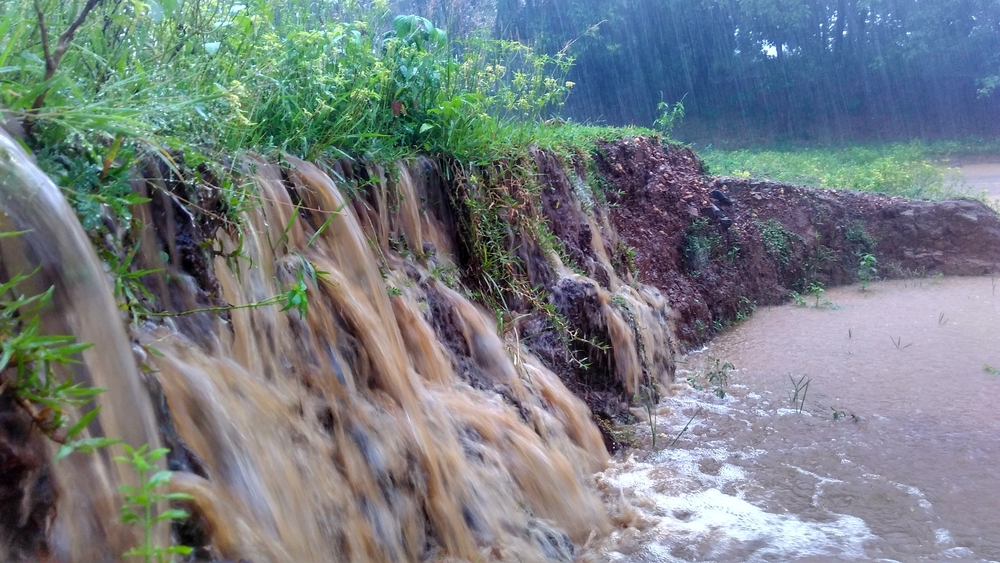Are you Covered?
Stormwater discharge is classified as rainwater and snowmelt that does not immediately infiltrate into the ground. As stormwater flows over impervious surfaces sediments and industrial pollutants are picked up and discharged to storm drains, drainage ditches, other conveyances, or are discharged directly into waterbodies. Most stormwater systems do not provide treatment to the water they collect, which means preventing sediments and pollutants from entering the stormwater is critical. The increased flow of pollutants can impair waterbodies, degrade biological habitats, or pollute drinking water sources.
Federal Stormwater Requirements
The Clean Water Act (CWA) established by the United States Environmental Protection Agency (US EPA) in 1972 was designed to regulate the discharge of pollutants into the waters of the United States and regulate quality standards for surface waters. The CWA established a precedent preventing discharge of any pollutant from a point source into navigable water unless a permit was obtained, leading to the National Pollutant Discharge Elimination System (NPDES) permit program for the control of discharges under 40 CFR 122.21.
Industrial facilities typically perform a portion of their activities outside in areas exposed to the elements. These activities may include material storage and handling, vehicle fueling and maintenance, shipping and receiving, and salt storage, which can result in pollutants being exposed to stormwater. To minimize the pollutants being discharged in stormwater, the US EPA identified classes of industrial facilities that must apply for coverage under the NPDES permit program. Permit requirements are based on the type of activity conducted at the facility which are classified into “sectors” based on Standard Industrial Classification (SIC) Codes and Industrial Activity Codes. The US EPA has identified 29 sectors of industrial activity that are regulated by the NPDES permit program. Pollutants regulated under the NPDES program include, but are not limited to, rock, sand, dirt, and agricultural, industrial, and municipal waste discharged into waters of the United States. If a facility falls into one of the 29 sectors, they may apply for a general or individual permit. Permits generally require the development of a Storm Water Pollution Prevention Plan (SWPPP) based on site assessments, monitoring data on storm water discharges, mitigation of any possible effects of discharges on endangered species and national historical properties if necessary, and submittal of an annual stormwater report.
if their industrial activities and materials are completely sheltered, industrial establishments in one of the 29 sectors have the option to file a No Exposure Certification (NEC) under the NPDES permit requirements. No additional requirements apply under the federal permitting program for NEC applications.
Pennsylvania Stormwater
Stormwater in Pennsylvania is regulated under 25 Pa Code Chapter 92a. Pennsylvania follows the US EPA regulations on who must apply for NPDES permit coverage. However, the Pennsylvania Department of Environmental Protection (PADEP) requires a Preparedness, Prevention, and Contingency (PPC) Plan under 25 Pa Code Chapter 78a. The Pennsylvania PPC Plan is implemented by the following programs through the PADEP:
| Hazardous Waste Program | Oil and Gas Program |
| Residual Waste Program | Water Quality Program |
| Municipal Waste Program | NPDES Program |
The objective of a PPC Plan is to reduce the potential impact of any releases, incidents, spill, or other public health emergencies that possess the potential to affect a facility’s safety and the surrounding environment. PPC Plans are required by PADEP for any manufacturing or commercial installation that has the potential for causing accidental pollution of air, land, or water, or a potential endangerment to public health and safety through the unexpected release of toxic, hazardous, or other polluting materials. Regardless of the facility’s filing status, a PPC Plan is required for any NPDES application, even if they are simply submitting and application for NEC.
In addition, in the case of any regulated storage tank facility with an aboveground storage capacity over 21,000 gallons, a Spill Prevention Response (SPR) plan is required, which requires a specific downstream notification. In most cases, an updated PPC Plan with the downstream notification meets the requirements of the SPR plan. PADEP recommends the consolidation of all required plans for each facility.
PADEP has developed Guidelines for the Development and Implementation of Environmental Emergency Response Plans. In situations where stormwater management goes beyond the samples provided in these guidelines, facilities can seek outside technical expertise. Doing so can also help ensure the PPC Plan not only meets PADEP requirements, but also fits with current facility standard operating procedures.
References
25 Pa Code Chapter 78a – PPC plan containment and requirements
25 Pa Code Chapter 92a – NPDES Permitting, Monitoring, and Compliance




